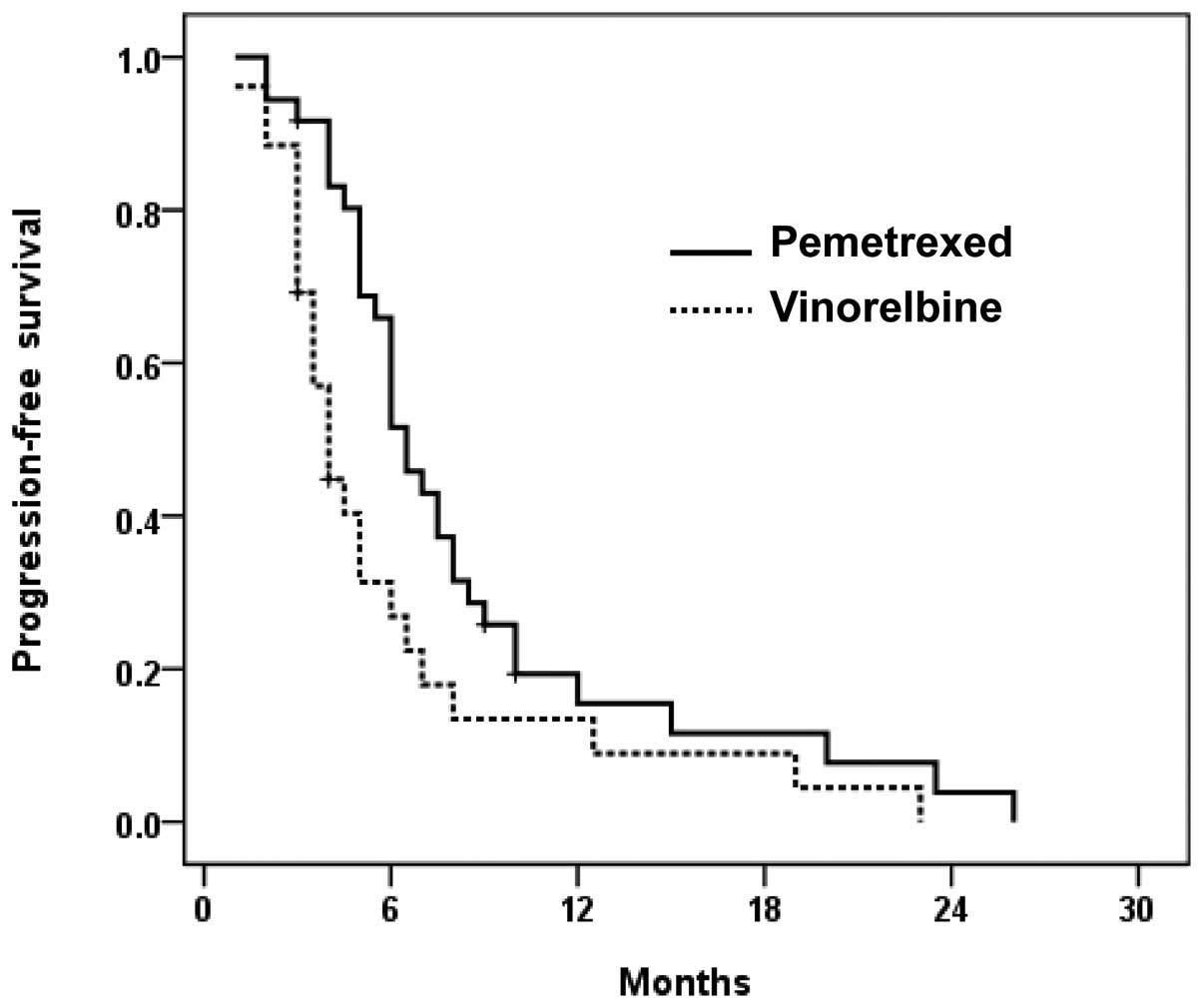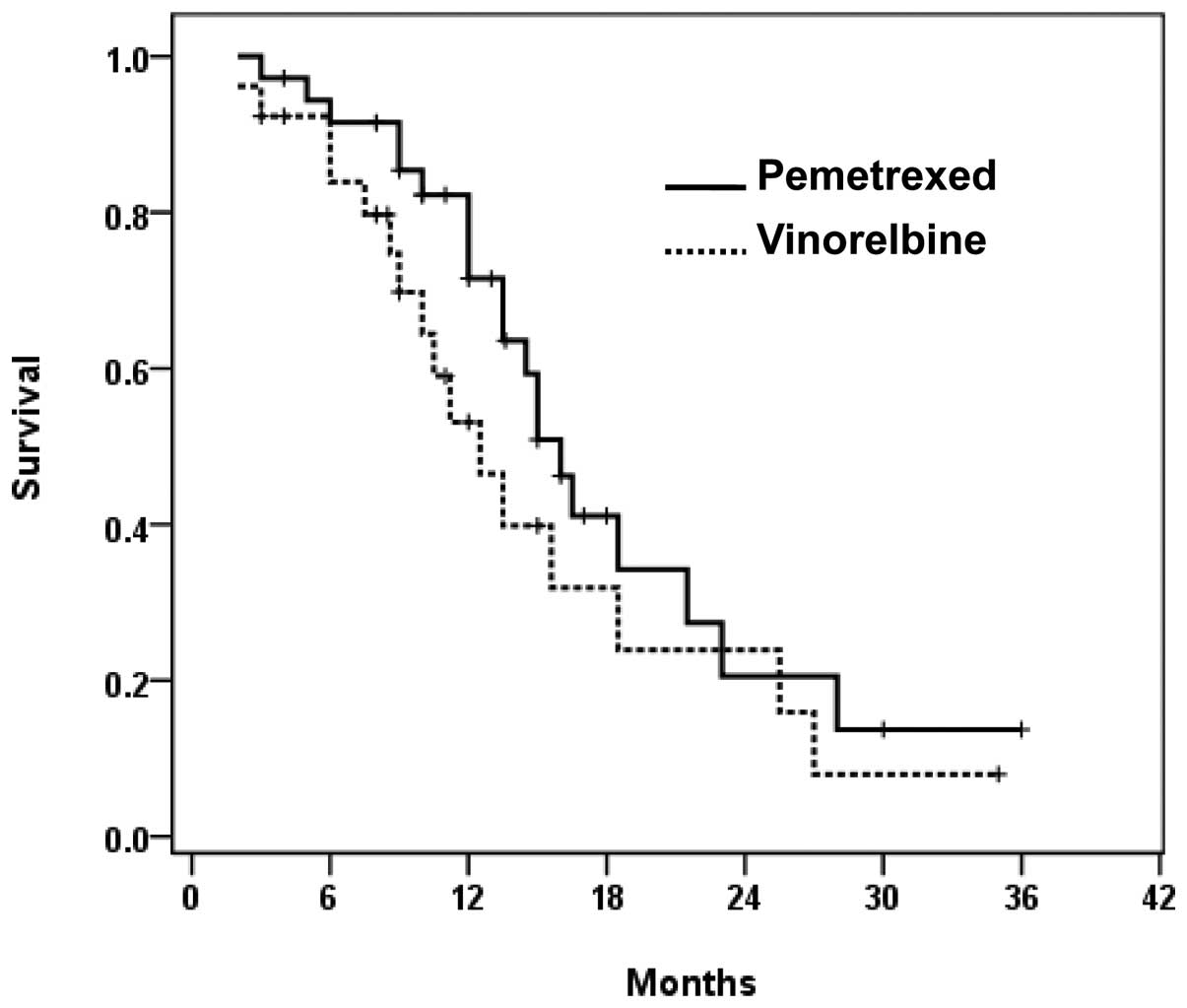Pemetrexed versus vinorelbine treatment of advanced non‑squamous non-small cell lung cancer in elderly patients
- Authors:
- Published online on: February 18, 2013 https://doi.org/10.3892/mco.2013.77
- Pages: 553-557
Metrics:
Total
Views: 0 (Spandidos Publications: | PMC Statistics:
)
Total PDF Downloads: 0 (Spandidos Publications: | PMC Statistics:
)
Abstract
Pemetrexed, a multitargeted antifolate agent, has been shown to have clear activity in non‑squamous non‑small cell lung cancer (NSCLC). The aim of this retrospective studywas to evaluated the efficacy and toxicity of pemetrexed vs. vinorelbine in NSCLC elderly patients. Chemotherapy‑naive patients aged ≥70 years with stage IIIB/IV non‑squamous NSCLC and performance status ≤2 were eligible for inclusion in this study. Patients were selected to receive pemetrexed 500 mg/m2 (day 1) or vinorelbine 25 mg/m2 (days 1 and 8) every 21 days. In total, 62 patients were enrolled in the present study. Thirty‑six patients were treated with pemetrexed, and 26 with vinorelbine. The median number of cycles received was six in the pemetrexed group vs. four in the vinorelbine group. Pemetrexed demonstrated a significantly higher disease control rate (DCR) (80.5 vs. 65.3%; P=0.011), and an improvement in progression‑free survival (6.5 vs. 4.0 months; P=0.018) compared to vinorelbine. Neutropenia occurred in more patients in the vinorelbine group compared to the pemetrexed group, grade 3‑4 neutropenia was observed in 53.8 and 11.1% of patients in the two groups, respectively (P<0.001). Pemetrexed‑treated patients experienced lower frequencies of anemia, thrombocytopenia and non‑hematologic toxicities compared to vinorelbine‑treated patients. The toxicity profiles for the two treatment groups were mild and tolerable. In conclusion, pemetrexed improved DCR, progression‑free survival, and presented a lower incidence of treatment-related adverse events compared to vinorelbine, although overall survival was not significantly improved. As a result, pemetrexed monotherapy might be considered as a good option in the treatment of elderly patients with advanced non‑squamous NSCLC.












